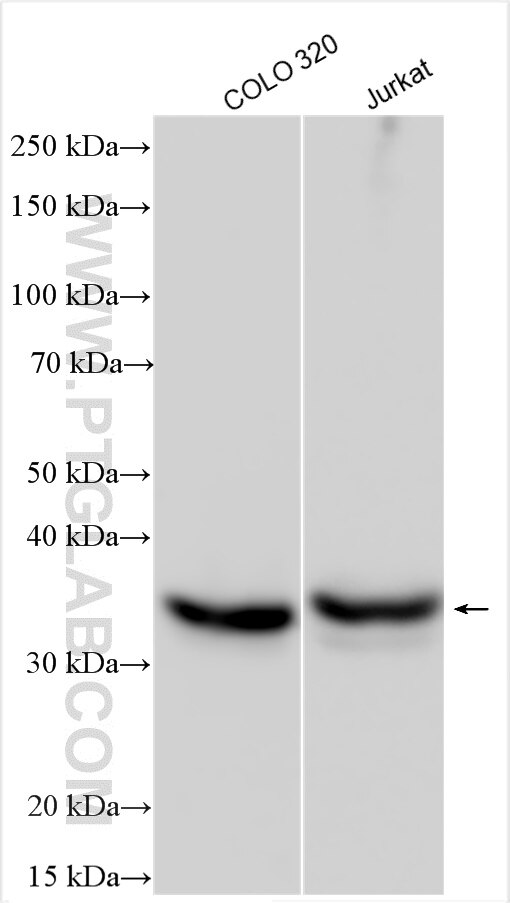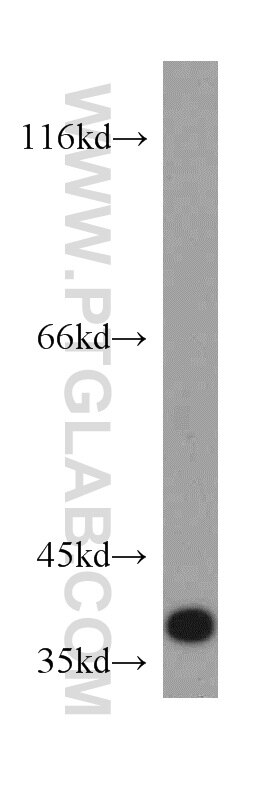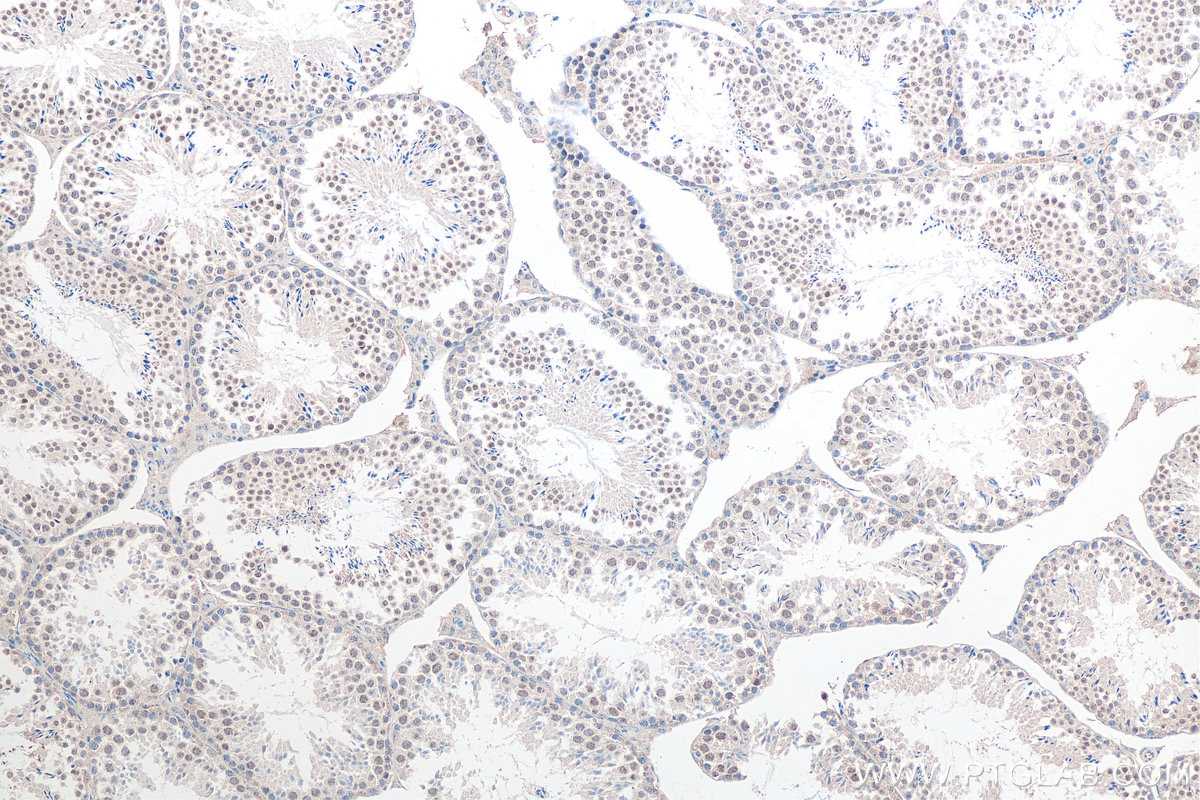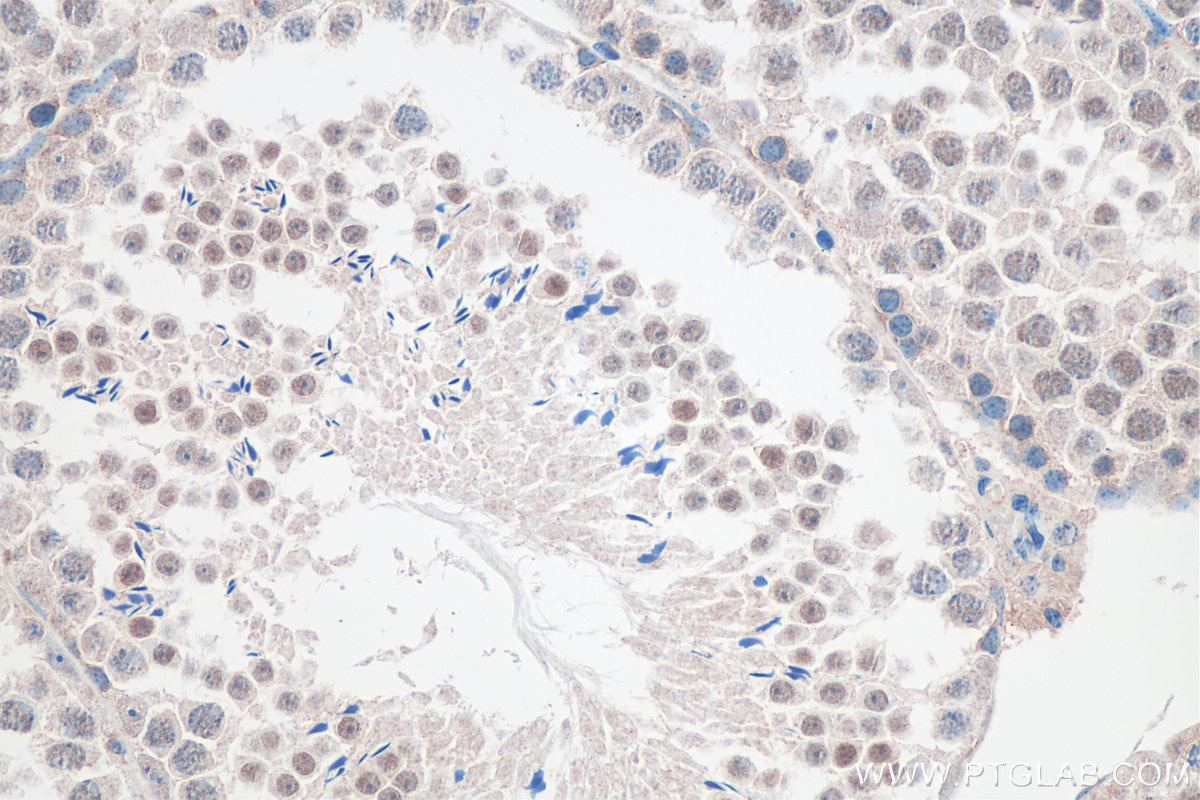Tested Applications
| Positive WB detected in | COLO 320 cells, HeLa cells, Jurkat cells |
| Positive IHC detected in | mouse testis tissue Note: suggested antigen retrieval with TE buffer pH 9.0; (*) Alternatively, antigen retrieval may be performed with citrate buffer pH 6.0 |
Recommended dilution
| Application | Dilution |
|---|---|
| Western Blot (WB) | WB : 1:1000-1:6000 |
| Immunohistochemistry (IHC) | IHC : 1:50-1:500 |
| It is recommended that this reagent should be titrated in each testing system to obtain optimal results. | |
| Sample-dependent, Check data in validation data gallery. | |
Product Information
20863-1-AP targets FAM76A in WB, IHC, ELISA applications and shows reactivity with human, mouse samples.
| Tested Reactivity | human, mouse |
| Host / Isotype | Rabbit / IgG |
| Class | Polyclonal |
| Type | Antibody |
| Immunogen |
CatNo: Ag14904 Product name: Recombinant human FAM76A protein Source: e coli.-derived, PGEX-4T Tag: GST Domain: 142-227 aa of BC025768 Sequence: QRKHLSSSSRAGHQEKEQYSRLSGGGHYNSQKTLSTSSIQNEIPKKKSKFESITTNGDSFSPDLALDSPGTDHFVIIAQLKEEVAT Predict reactive species |
| Full Name | family with sequence similarity 76, member A |
| Calculated Molecular Weight | 307 aa, 35 kDa |
| Observed Molecular Weight | 35-38 kDa |
| GenBank Accession Number | BC025768 |
| Gene Symbol | FAM76A |
| Gene ID (NCBI) | 199870 |
| RRID | AB_10693681 |
| Conjugate | Unconjugated |
| Form | Liquid |
| Purification Method | Antigen affinity purification |
| UNIPROT ID | Q8TAV0 |
| Storage Buffer | PBS with 0.02% sodium azide and 50% glycerol, pH 7.3. |
| Storage Conditions | Store at -20°C. Stable for one year after shipment. Aliquoting is unnecessary for -20oC storage. 20ul sizes contain 0.1% BSA. |
Background Information
FAM76A is a member of FAM76 family. It is reported that FAM76A may be regulated by WTAP. FAM76A is highly expressed in the WTAP high-expression group and also expressed at low levels in the WTAP low-expression group, which can be confirmed by TCGA data (PMID: 32998774).
Protocols
| Product Specific Protocols | |
|---|---|
| IHC protocol for FAM76A antibody 20863-1-AP | Download protocol |
| WB protocol for FAM76A antibody 20863-1-AP | Download protocol |
| Standard Protocols | |
|---|---|
| Click here to view our Standard Protocols |










